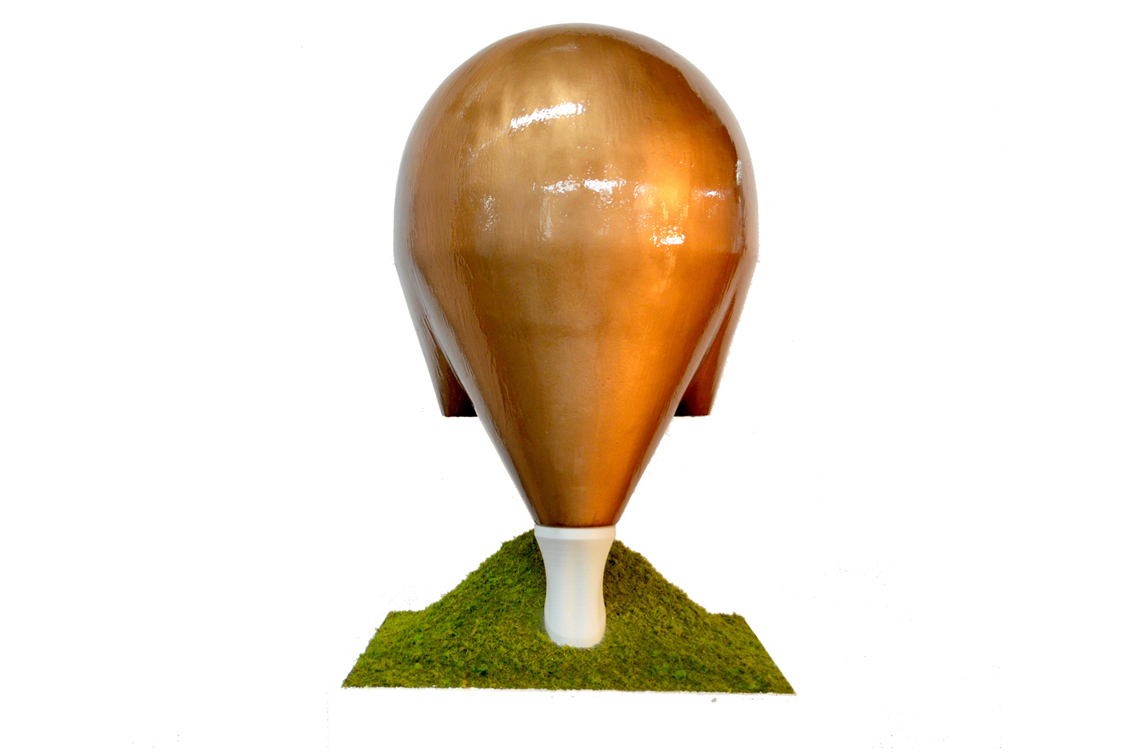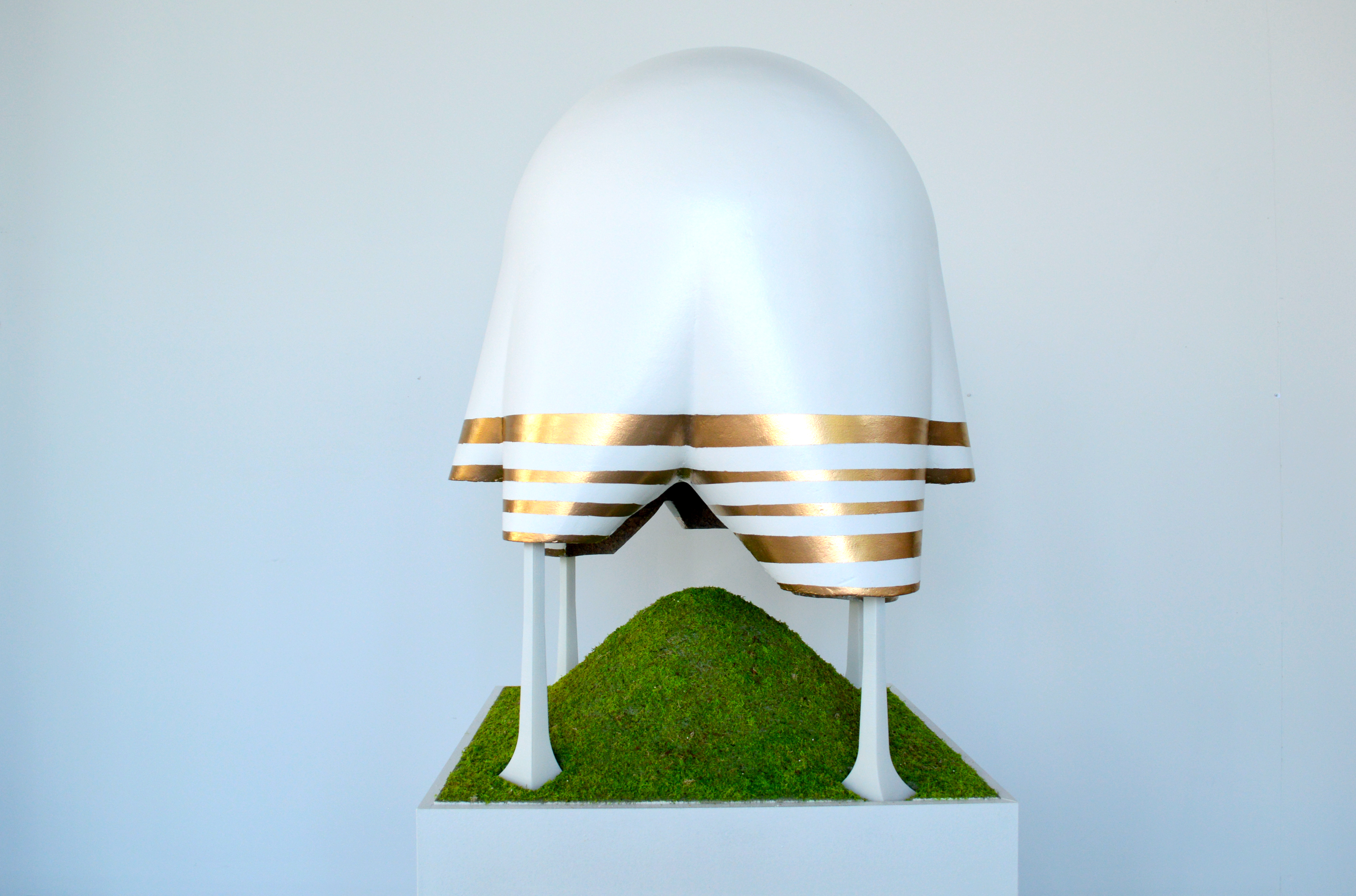![]()
For the 2015 Architectural League Prize exhibition, Authenticity, 4 domes were made with the following ideas in mind.
In the United States four primary middles of America can be identified depending on whether or not you include Alaska and Hawaii, if you include the curvature of the earth, or if you use Google maps and GoogleEarth on a PC or a Mac. It should be noted that the context of these American middles do not in themselves substantiate or offer relevant contingencies for architectural form to correspond with or derive techniques from, rather the inverse is a more intriguing possibility in which these American pastoral middles are conceptually re-authored by the introduction of something unfamiliar. A Project Four Domes implicates the four middles of America, a spatial paradox of locating centers within boundaries, by marking these remote, pastoral points with free standing domes atop earthen mounds.
![Four Middles of America]()
![Four Domes Plans and Sections. Plan organization derived from historical conventions in precedent domes]()
![Shingled Dome]()
![]()
![]()
![]()
![Textural Patina]()
![]()
![]()
![]()
![Gilded]()
![]()
![]()
![Gilded Stripes]()
![]()
![]()
![]()
The American prairie is a context decidedly unfamiliar with the
typology of domes. It follows that domes are most often encountered as rotund
crowns atop civic, political, or religious buildings common to more densely
populated situations. Thus, domes and the American prairie have not been properly
socialized with one another. In many ways this all makes perfect sense. The
histories, myths, significations, politics, and narratives of domes and the
American prairie, while each compelling in their own right, have such few
causes for shared interests. Yet in speculating on their contact with one
another inherent qualities of each are enhanced, even exaggerated, by the
other's presence, each seeming to re-author the other.
This surrealist technique - bringing things into contact that do
not otherwise belong together - encourages novel readings of relationships
between architectural form and context that opens up new territories for
speculative work. Questioning this encounter between dome and prairie
affords experimentation with new expressions for an old typology and casts form
and context into new formal, social, cultural, and political arrangements.
Disembodying the domes from an institutional underfoot allows them to be characterized by formal, spatial, and sceneographic qualities rather than through a pre-determined lens of a cultural or political institution. In other words, the biopsy of the dome from an institutional affiliation alleviates predetermined cultural associations, thereby emphasizing the material and spatial qualities. The intention is to reconvene discussions on this longstanding typology in order to speculate on alternative possibilities in contemporary culture. Each of the Four Domes borrows from a traditional plan type of domes – centralized, cruciform, linear, and so on – but achieves an outward address that is not immediately associated to its conventional plan organization. This is primarily the result of composing the domes using only spheres, cones, and cylinders. Along with the domes, is proposed a hill. The hill produces an interiority generally not experienced in domes by lifting one vertically into the volumetric center of the dome.

















